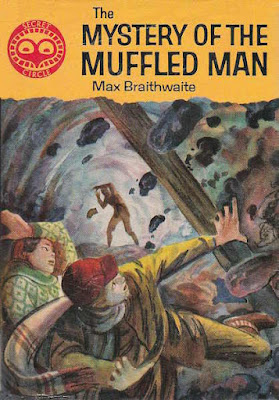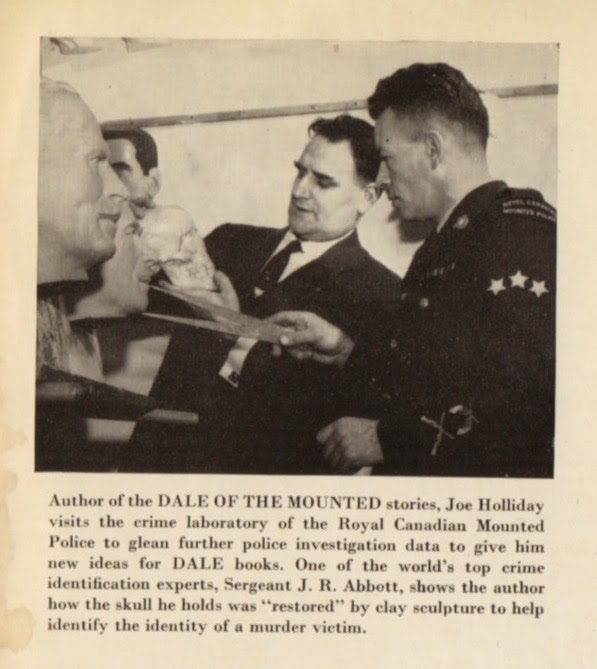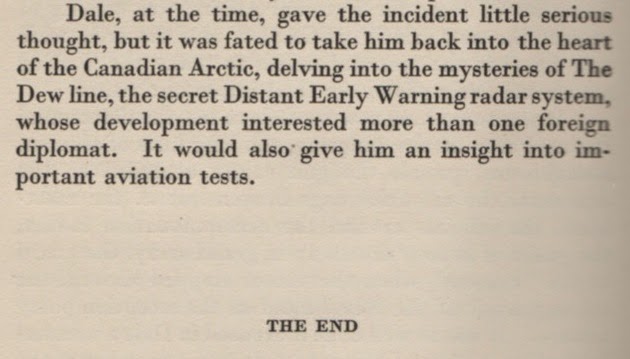Beautiful Joe: The Autobiography of a Dog
[New and Revised Edition]
Marshall Saunders
Toronto: McClelland & Stewart, n.d.
266 pages
Like The Woman Who Did, I thought I knew this novel.
I did not.
My wife didn't want to hear me talk about Beautiful Joe because she thought too she knew the novel and would find it upsetting. The inspiration for this "autobiography" has a park named in his honour in Meaford, Ontario. Because we've found his story so disturbing, we've never visited.
One rainy day, when we were eight weeks old, Jenkins, followed by two or three of his ragged, dirty children, came into the stable and looked at us. Then he began to swear because we were so ugly, and said if we had been good-looking, he might have sold some of us. Mother watched him anxiously, and fearing some danger to her puppies, ran and jumped in the middle of us, and looked pleadingly up at him.Nothing prepared me for that hellish scene, but I knew enough about the novel to brace myself for more blood and violence.
It only made him swear the more. He took one pup after another, and right there, before his children and my poor distracted mother, put an end to their lives. Some of them he seized by the legs and knocked against the stalls, till their brains were dashed out, others he killed with a fork. It was very terrible. My mother ran up and down the stable, screaming with pain, and I lay weak and trembling, and expecting every instant that my turn would come next. I don't know why he spared me. I was the only one left.
 |
| Beautiful Joe with his mother, brothers, and sisters, as depicted by John Nicholson in the Jerrold's edition (c. 1907). |
As I sat by her, feeling lonely and miserable, Jenkins came into the stable. I could not bear to look at him. He had killed my mother. There she lay, a little, gaunt, scarred creature, starved and worried to death by him. Her mouth was half open, her eyes were staring. She would never again look kindly at me, or curl up to me at night to keep me warm.The milkman gives Beautiful Joe a kick. When the dog fights back, Jenkins calls for an axe:
He laid my head on the log and pressed one hand on my struggling body. I was now a year old and a full-sized dog. There was a quick, dreadful pain, and he had cut off my ear, not in the way they cut puppies' ears, but close to my head, so close that he cut off some of the skin beyond it. Then he cut of the other ear, and, turning me swiftly round, cut off my tail close to my body.A cyclist hears the dog's cries, comes upon the scene, and beats Jenkins to a pulp. This passerby, Harry, takes the maimed creature to the home of his uncle and aunt, Rev and Mrs Morris, where he is slowly nursed back to health.
Then he let me go and stood looking at me as I rolled on the ground and yelped in agony.
To be frank, I wasn't sure I could take too much more, but then I didn't know Beautiful Joe. I had thought it was the story of a maimed dog, who after a near lifetime of trials, tribulations, and adventure finally finds a loving home. I did not expect the manse be that home. An enlightened couple with five children, Rev and Mrs Morris believe that care for the lower creation teaches kindness, generosity, empathy, selflessness, and all sorts of other good things. Our hero joins a menagerie, consisting of rabbits, canaries, goldfish, pigeons, bantams, a guinea pig, a cat, and another dog. He's given the name Beautiful Joe because he's so ugly.
In many ways, Beautiful Joe's story ends in the third of the novel's thirty-five chapters, with his arrival at the Morris home. While he does experience a few moments of adventure – a train derailment, the rescue of abandoned farm animals, an encounter with a burglar (who turns out to be Jenkins!) – the great dramas of his life are in the past. The dog leads a quiet, uneventful life, largely in the company of Miss Laura Morris, devoting the bulk of his autobiography to relaying conversations he's heard regarding the proper and improper treatment of animals.
Beautiful Joe is at its heart a work of propaganda, written with the hope of winning an 1893 contest sponsored by the American Humane Education Society. In this Saunders was successful. I wonder whether this dedication would've featured had the novel lost:
As old novels go, Beautiful Joe offers the twenty-first-century reader a particularly focused glimpse of another time. I'll take away some knowledge of Bands of Mercy, organizations that were entirely new to me. I'll also remember the distaste shown fox hunting.
(I have a hard time these days listening to "Slave to Love.")
The novel ends abruptly with Beautiful Joe as an old dog: "I thought when I began to write, that I would put down the events of each year of my life, but I fear that would make my story too long, and neither Miss Laura nor any boys and girls would care to read it." The last adventure Beautiful Joe describes begins when he hears an amusing account of a man named Bellini and his performing animals. Curious, he visits the troupe – monkeys, dogs, ponies, goats – who are penned in a stable adjacent the town's hotel. Beautiful Joe is on his way home when he learns of a fire at that same hotel. He runs back:
In front of me I heard such a wailing, piercing noise, that it made me shudder and stand still. The Italian's animals were going to be burned up, and they were calling to their master to come and let them out. Their voices sounded like the voices of children in mortal pain. I could not stand it. I was seized with such an awful horror of the fire, that I turned and ran, feeling so thankful that I was not in it.The Oxford Companion to Canadian Literature informs that the version I read was revised so as to make it less violent.
I don't have the fortitude of an nineteenth-century child.
Object and Access: One of the biggest selling Canadian novels of all time, there are over eight million copies out there. Mine was obtained in 2017 through a small donation to the St Marys Public Library (a two hour and fifteen minute drive from Meaford's Beautiful Joe Park). Most of the twenty-two uncredited illustrations have been coloured in by a previous owner. Might it be Georgie, who in 1944 received it as a Christmas gift?
Beautiful Joe entered the public domain decades ago, and the print on demand vultures have moved in. Formac publishes
Prices for used copies of Beautiful Joe are all over the place. Three booksellers are offering true first edition, published in 1894 by the American Baptist Publication Society, beginning at US$250; of these, at US$500, the one to buy is a copy inscribed by Saunders to "a fellow Nova Scotian."
The most expensive copy is a print-on-demand edition offered by a crooked Texas bookseller at US$1207.17.
Addendum: Karyn Huenemann of Canada's Early Women Writers points out that Broadview publishes an illustrated edition edited with an introduction by Keridiana Chez. Price: $18.95. The cover suggests Beautiful Joe before Jenkins reached for that axe.
Related post:






















































